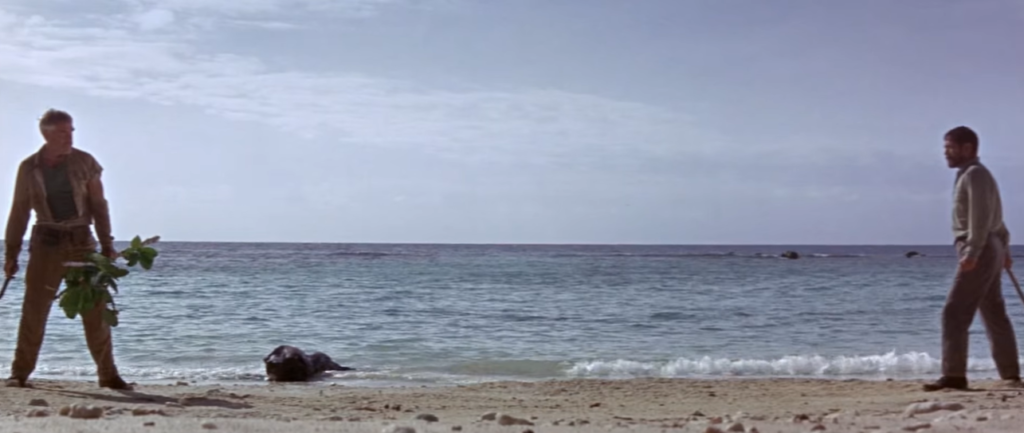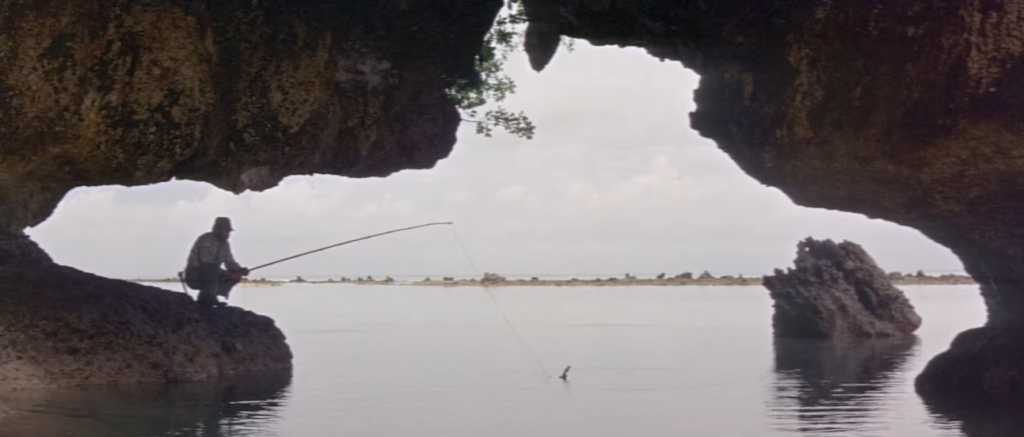“Oh – for a second I thought you were a Jap.”
|

Synopsis:
During World War II, an American pilot (Lee Marvin) and a Japanese captain (Toshiro Mifune) are marooned together on a deserted island and must learn how to get along with one another to survive.
|
|
Genres, Themes, Actors, and Directors:
- Deserted Island
- John Boorman Films
- Lee Marvin Films
- Survival
- Toshiro Mifune Films
- World War II
Review:
Shot entirely on location in the Rock Islands of Palau, this unusual World War II-era film has just two actors — neither of whom speak each other’s language — and is primarily focused on how the men negotiate existence with one another. Will they continue to fight and possibly kill each other, as they have been trained to do?

At first, this is absolutely on their minds; but gradually they come to realize that collaboration for survival makes so much more sense. With Marvin and Mifune in the lead roles, we are always intrigued to see what will happen next — and Conrad Hall’s cinematography brings everything to vivid life. While it’s not must-see viewing, it’s well worth a look.
Notable Performances, Qualities, and Moments:
- Lee Marvin and Toshiro Mifune as the stranded men

- Conrad Hall’s cinematography

Must See?
No, but it’s definitely recommended for one-time viewing.
Links:
|




One thought on “Hell in the Pacific (1968)”
First viewing (12/13/21). Not must-see
~ but, in some sense, it can be an interesting ‘experiment’ for the adventurous FF… if he / she can stay awake. Some viewers have felt that it’s a crashing bore.
For the most part, it’s not exactly *hell* in this pacific; it’s mostly just two guys who speak different languages… slowly, eventually learning to be more like comrades.
Lalo Schifrin gets to do experimental things in his film score and DP Conrad Hall probably didn’t mind the challenge of filming on a faraway island.
The main problem is that it was never properly decided how this film should end. The ending used in general distribution now (an explosion) isn’t all that satisfying.